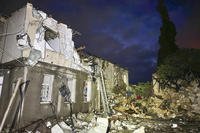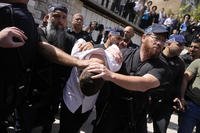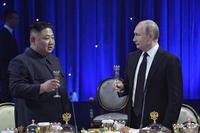The development of next generation combat UAVs along with the health of the Royal Air Force's current fighter fleet will be key factors in determining how many F-35C Lightning II Joint Strike Fighters the United Kingdom buys in the coming years, a senior British defense official said today.
"We know the number of F-35s we need" for a carrier air wing but have yet to decide on how many ground based JSFs are needed to perform "deep and persistent" missions, Gen. Nicholas Houghton, vice chief of the British defense staff said during a presentation in Washington sponsored by the Center for Strategic and International Studies.
To this end, British officials will weigh progress made in fielding unmanned combat air vehicles (UCAVs) in the next five years against the service lives of the island nation's fleet of existing fighters when determining Britain's F-35 buy.
These questions will ultimately be answered when the U.K. conducts its next strategic defense revue in 2015, according to the general.
The Royal Air Force plans to eventually operate fly a fleet of Eurofighter Typhoons and F-35s. The Typhoon is already replacing the RAF's F3 air superiority-variant Tornadoes while the GR4 ground attack variant will eventually be replaced by F-35s.
Meanwhile, a desire for increased range, payload and interoperability with the United States and French navies combined with concerns about rising costs led to last month's decision by the United Kingdom to swap its planned buy of 138 short take-off and vertical landing F-35B-model JSFs for an unspecified number of F-35C carrier variants, Houghton said.
The desire to keep costs down and get more performance out of U.K. F-35s combined with the fact that British naval aviators could be training for carrier operations on U.S. and French aircraft carriers for the next decade "played into the discussion and ultimately the decision" by London to trade JSF variants, Houghton said.
All of this comes amid reports that the beleaguered fighter program may need as much as $2.5 to $5 billion in additional funding and will face several years worth of delays, with the B-version of the plane slipping by as much as three years.








